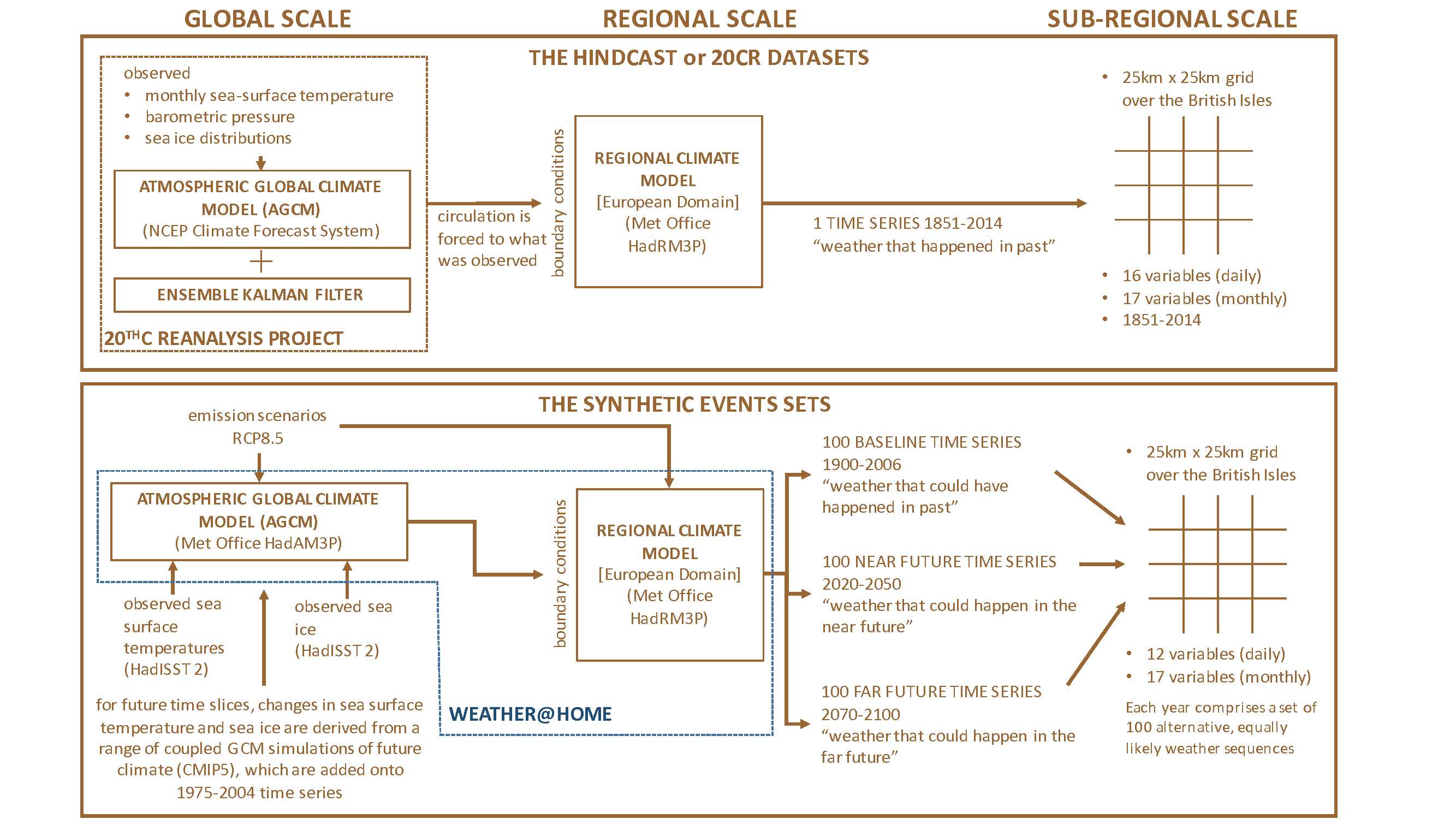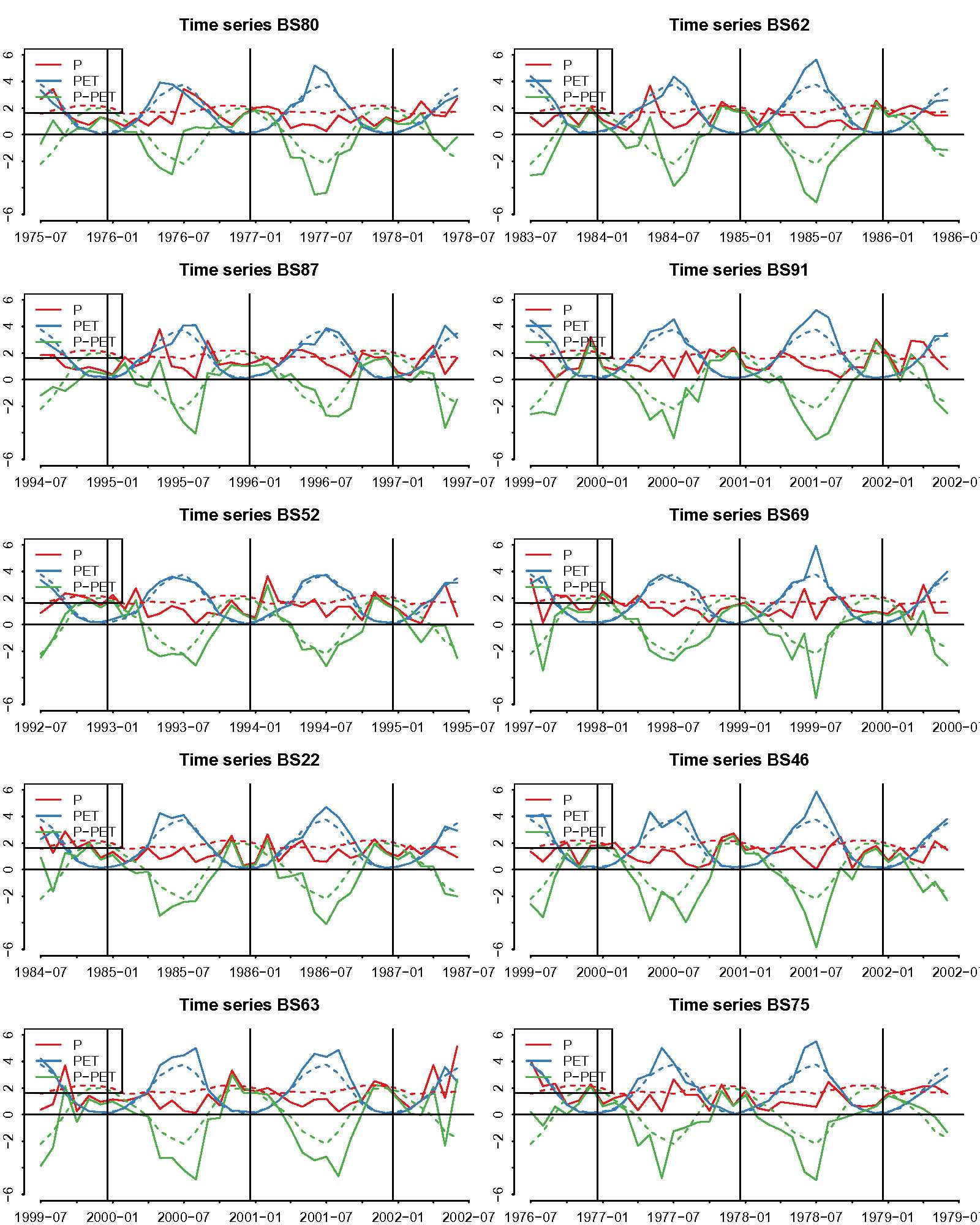Key science outputs:
- Hindcast dataset: A retrospective of the weather during past droughts for 1851-2014 using the regional climate model HadRM3P driven by the 20CR reanalysis.
- Baseline synthetic drought dataset: 100 weather time series from 1900-2006 that could have occurred under the various factors that influence climate and weather (greenhouse gases, volcanoes, ocean state, etc), using weather@home 2, i.e., the regional climate model HadRM3P driven by its global counterpart, the global climate model HadAM3P.
Introduction
Droughts being long-lasting episodes of dry conditions, only few events have been observed. Moreover, widespread and frequent meteorological measuring stations have only been available in the past few decades. The resulting limited number of observed drought events in the UK does not allow for robust estimation of the statistics of past droughts or thorough exploration of options for managing droughts.
There are various ways of circumventing this limitation. On the one hand, one can create reconstructions of past weather that go further back in time than observations. This can be done by combining the few observations available in an early time period with a model. On the other hand, one can use a model to generate a large number of time series and drought events which could have happened but did not. In MaRIUS, these two approaches have been used to generate both a reconstruction of the weather that goes back to 1850, and a large number of droughts that could have occurred in the 20th century.
Research methods
The MaRIUS climate team delivers 2 types of products for MaRIUS researchers and, in time, any interested user. These are generated using the regional climate model HadRM3P, run at a resolution of 25km over Europe. Figure 1 below illustrates how the two products have been derived.
-
Hindcast (1851-2014): This product is a model-based 6-hourly reconstruction of the weather that occurred in the past. HadRM3P is driven by the 20th Century reanalysis at its lateral boundaries, which constrains the atmospheric circulation to the observed time series.
-
Synthetic event set baseline “(recent past, see also how the same setup is used for future projections): This product (here for 1900-2006) provides a range of possible weather time series that could have occurred under the various factors that influence climate (greenhouse gases, volcanoes, ocean state, etc). To do so, a global climate model, (HadAM3P, the parent global model of HadRMP), driven by observed sea surface temperature is used to drive HadRM3P (using the weather@home distributed climate modelling system), thereby generating a large number of droughts that could have occurred in the past.
Daily model output on the 25km model grid includes relevant variables such as precipitation, temperature, and variables needed to estimate potential evaporation. For MaRIUS, version 2 of weather@home was developed, which includes a more sophisticated land surface model that account for subgrid-scale land cover heterogeneity, and an increased horizontal resolution in HadRM3P (25km compared to 50km in weather@home 1).

Preliminary Result 1: Example time series of drought events in the baseline event set

Papers:
- weather@home 2 description and validation paper currently in review: link to currently in review
Datasets: see drought datasets
Videos


